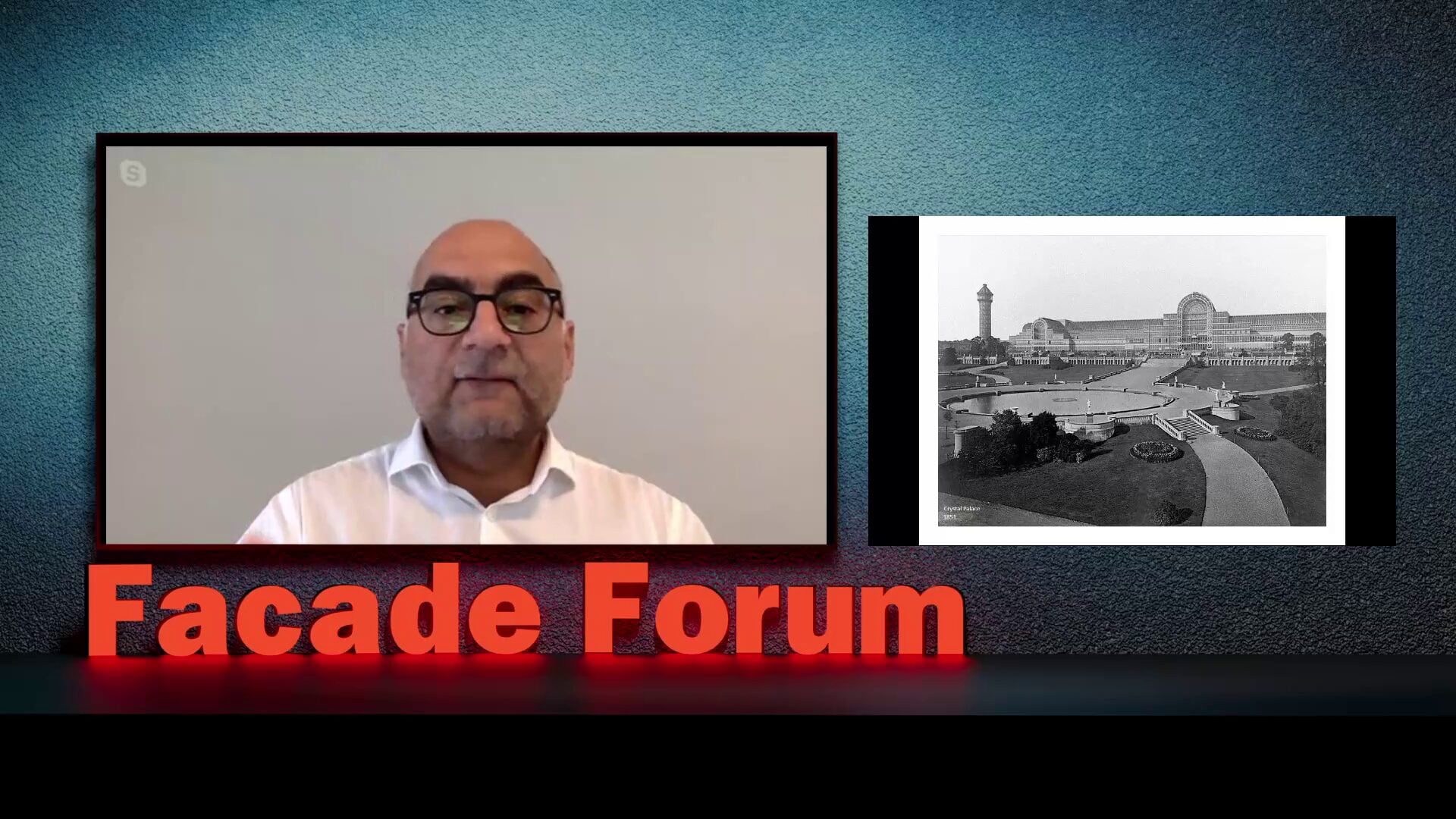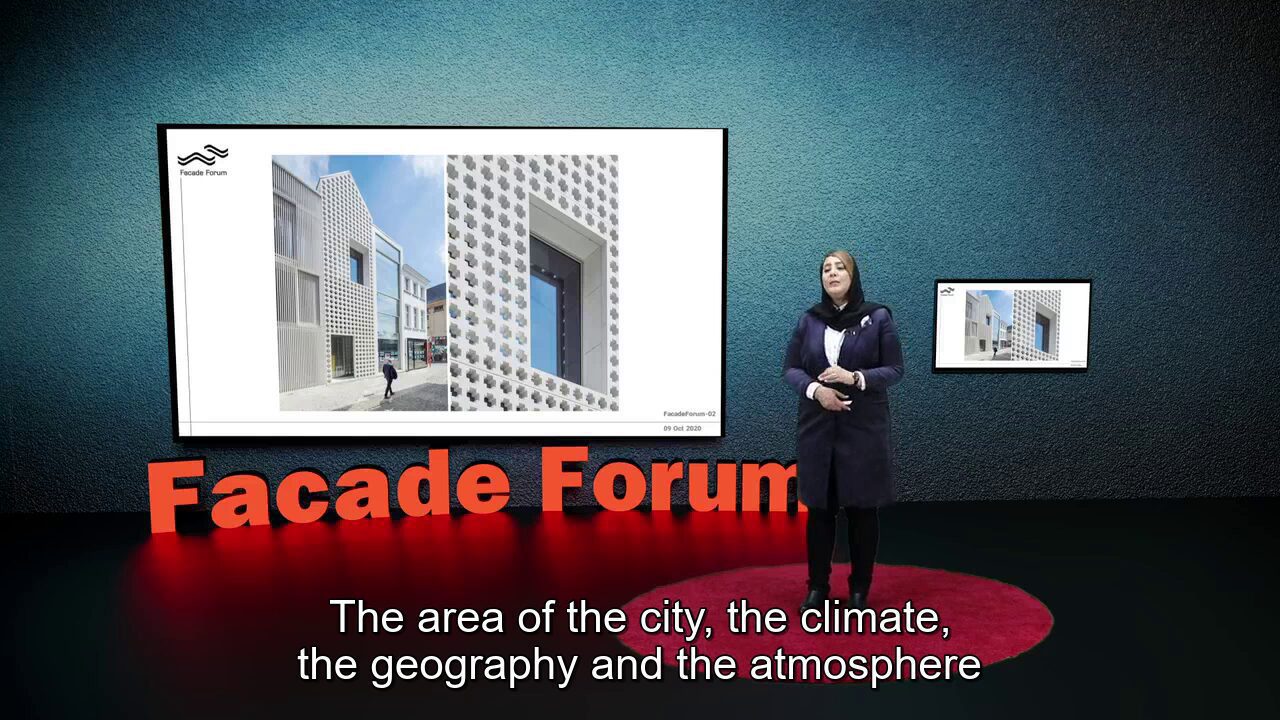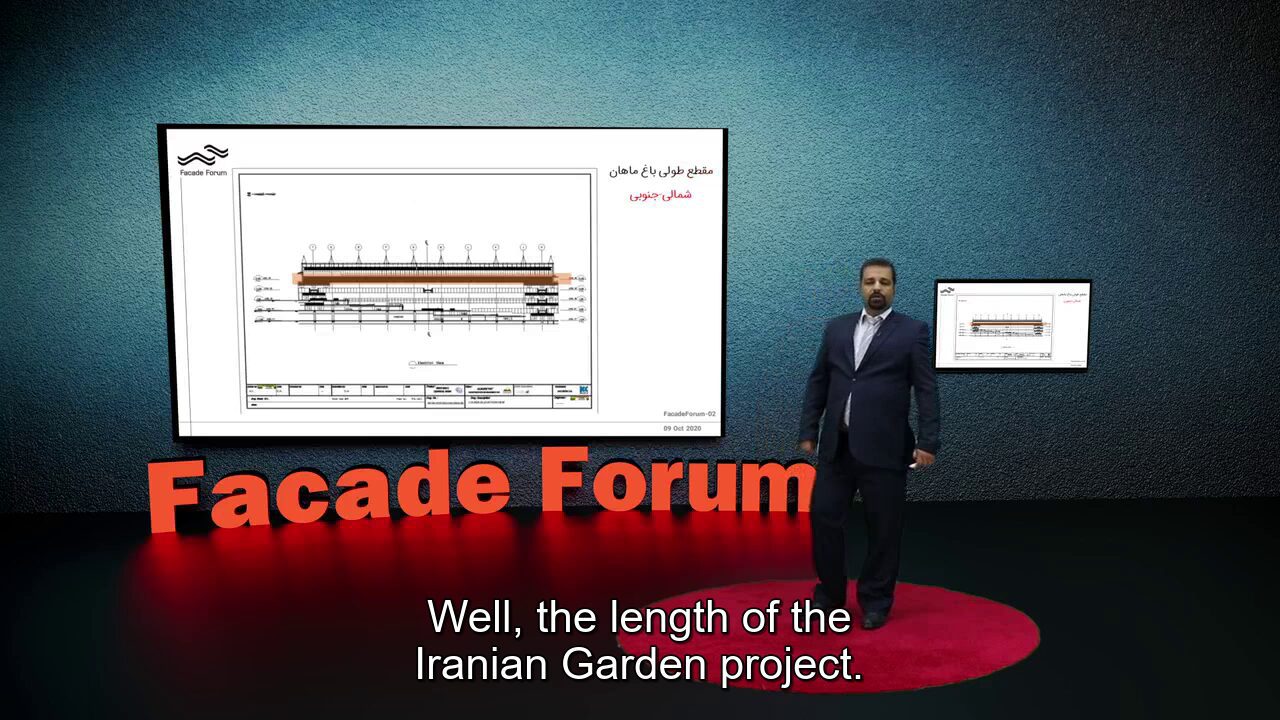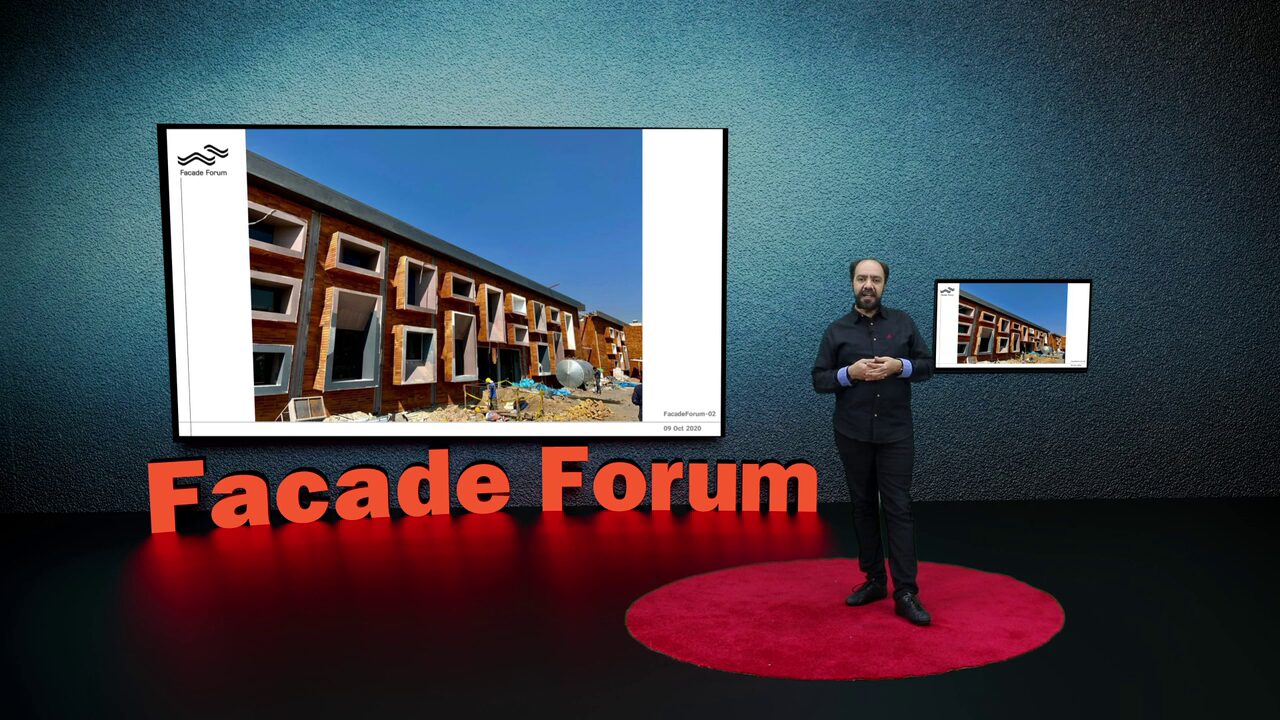در دومین نشست نما که به همت آلومینیوم شیشه تهران مشاور تخصصی نما مهرماه ۹۹ بصورت آنلاین با حضور بیش از ۱۵۰۰ نفر از معماران و مهندسین علاقمند به پوسته های صنعتی برگزار شد، مهندس سام طهرانچی از تورنتو به سخنرانی برای حاضرین در فاساد فروم در مورد آینده صنعت پوسته های ساختمانی پرداختند.
در ویدئویی جذاب، آقای سام تهرانچی، معمار شناختهشده ایرانی که به خاطر مشارکتهای قابل توجه خود در پروژههایی مانند باغ کتاب تهران و ساختمان بورس تهران شناخته میشود، به بررسی تکامل و اهمیت نماها در معماری میپردازد. از طریق روایت بینشآمیز خود، تهرانچی سفری را آغاز میکند که در آن نماها از دیدگاههای تاریخی، معاصر و آیندهنگر مورد بررسی قرار میگیرند و نوری بر نقش محوری آنها در معماری میتاباند.
نماها: بوم هنری معماری
تهرانچی با تأکید بر اهمیت حیاتی نماها در معماری شروع میکند. او آنها را نه فقط به عنوان یک لایه خارجی، بلکه خودِ هویت ساختمان توصیف میکند. به گفته تهرانچی، نماها قابلترین و تأثیرگذارترین بخش یک سازه هستند که نه تنها بر زیباییشناسی، بلکه بر کارکرد و تعامل محیطی ساختمان نیز تأثیر میگذارند.
سفری در زمان: تکامل نماها
راویت به روزهای دانشگاه تهرانچی باز میگردد، جایی که دانش سنتی اغلب ایده نماهای شیشهای را به عنوان غیرعملی یا نامناسب برای برخی از اقلیمها رد میکرد. با این حال، تکامل صنعت معماری و ظهور فناوریهای مدرن این دیدگاه را به شدت تغییر دادهاند. تهرانچی بر این نکته تأکید میکند که معماران امروزه به طور فزایندهای به سمت مدلهای شیشهای گرایش دارند، که توسط پیشرفتها در فناوری شیشه و درک عمیقتر از خواص آن هدایت میشوند.
این تغییر به سمت شیشه و سایر مواد نوآورانه، عصر جدیدی از مهندسی نما را به ارمغان آوردهاست. تهرانچی بر اهمیت طراحی نماهایی تأکید میکند که نه تنها به نیازهای امروز پاسخ میدهند بلکه با در نظر گرفتن چشمانداز آینده طراحی شدهاند.
چالشها و تحولات
با وجود پیشرفتها، تهرانچی به چالشهایی که با این حوزه جدید همراه است، اذعان میکند. پیچیدگی نماهای مدرن نیازمند رویکردی چندرشتهای است که تخصص معماران، مهندسان و متخصصان نما را ترکیب میکند. او بر اهمیت آموزش و آموزش تخصصی در هدایت این پیچیدگیها و گسترش مرزهای آنچه نماها میتوانند دستاورد داشته باشند، تأکید میکند.
آینده نماها: چشماندازی تعاملی و پایدار
با نگاهی به آینده، تهرانچی آیندهای را تصور میکند که در آن نماها نه تنها عناصری ثابت بلکه رابطهای پویا هستند که با محیط خود تعامل دارند. او ساختمانهایی را تصور میکند که نماهایی دارند که میتوانند به تغییرات شرایط آب و هوایی واکنش نشان دهند، انرژی را از خورشید به دست آورند و حتی با افراد ارتباط برقرار کنند. این چشمانداز با تأکید روزافزون بر پایداری و کارایی انرژی در معماری همراستا است، جایی که نماها نقش کلیدی در کاهش اثرات زیستمحیطی ساختمان دارند.
نتیجهگیری: پذیرش الگوی جدید طراحی نما
در پایان، ویدئوی مهندس سام تهرانچی به عنوان فراخوانی قوی برای معماران، مهندسان و دانشجویان برای پذیرش چشمانداز در حال تکامل طراحی نما عمل میکند. او از دیدگاههای سنتی فاصله گرفته و از جامعه معماری میخواهد که امکانات جدیدی را که نماها ارائه میدهند، کاوش کنند. از طریق نوآوری، همکاری و آموزش، تهرانچی باور دارد که ما میتوانیم ساختمانهایی را ایجاد کنیم که نه تنها از نظر بصری خیرهکننده هستند، بلکه پاسخگو، پایدار و افزودنیهای معنادار به بافت شهری هستند.
به عنوان بینندگان، ما توسط شور و چشمانداز تهرانچی برای آینده معماری الهام گرفتهایم. بینشهای او در دنیای نماها ما را به چالش میکشد تا فراتر از معمول فکر کنیم و دنیایی را تصور کنیم که در آن ساختمانها با محیط اطراف خود به روشهایی که هنوز به طور کامل درک نکردهایم، تعامل دارند.
In a captivating video, Mr. Sam Tehranchi, a renowned Iranian architect known for his significant contributions to projects such as the Tehran Book Garden and the Tehran Stock Exchange Building, delves into the evolution and significance of facades in architecture. Through his insightful narration, Tehranchi embarks on a journey that explores facades from historical, contemporary, and future perspectives, shedding light on their pivotal role in architecture.
Facades: The Canvas of Architectural Artistry
Tehranchi begins by emphasizing the critical importance of facades in architecture. He describes them as not just an exterior layer, but the very essence of a building’s identity. Facades, according to Tehranchi, are the most visible and impactful part of a structure, influencing not only the aesthetics but also the functionality and environmental interaction of the building.
A Journey Through Time: The Evolution of Facades
The narrative takes us back to Tehranchi’s university days, where conventional wisdom often dismissed the idea of glass facades as impractical or unsuitable for certain climates. However, the evolution of the architectural industry and the advent of modern technologies have drastically changed this perception. Tehranchi highlights how today’s architects are increasingly gravitating towards glass models, driven by advancements in glass technology and a deeper understanding of its properties.
This shift towards glass and other innovative materials has ushered in a new era of facade engineering. Tehranchi points out the significance of designing facades that not only meet today’s demands but are also forward-looking, taking into account the future landscape of architectural design.
Challenges and Transformations
Despite the progress, Tehranchi acknowledges the challenges that come with this new territory. The complexity of modern facades requires a multidisciplinary approach, combining the expertise of architects, engineers, and facade specialists. He underscores the importance of education and specialized training in navigating these complexities and pushing the boundaries of what facades can achieve.
The Future of Facades: An Interactive and Sustainable Vision
Looking ahead, Tehranchi envisions a future where facades are not just static elements but dynamic interfaces that interact with their environment. He imagines buildings with facades that can adapt to changing weather conditions, harness energy from the sun, and even communicate with people. This vision aligns with the growing emphasis on sustainability and energy efficiency in architecture, where facades play a crucial role in reducing a building’s environmental footprint.
Conclusion: Embracing the New Paradigm
In conclusion, Tehranchi’s video serves as a compelling call to action for architects, engineers, and students to embrace the evolving landscape of facade design. He encourages a departure from traditional notions and urges the architectural community to explore new possibilities that facades offer. Through innovation, collaboration, and education, Tehranchi believes we can create buildings that are not only visually stunning but also responsive, sustainable, and meaningful additions to the urban fabric.
As viewers, we are left inspired by Tehranchi’s passion and vision for the future of architecture. His insights into the world of facades challenge us to think beyond the conventional and to imagine a world where buildings interact with their surroundings in ways we have yet to fully comprehend.






